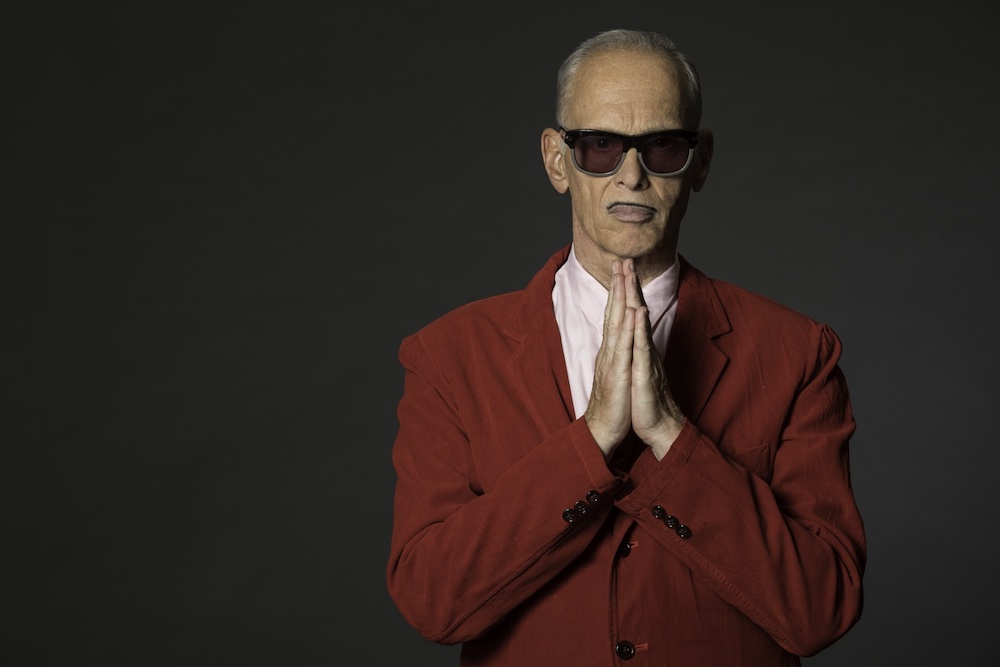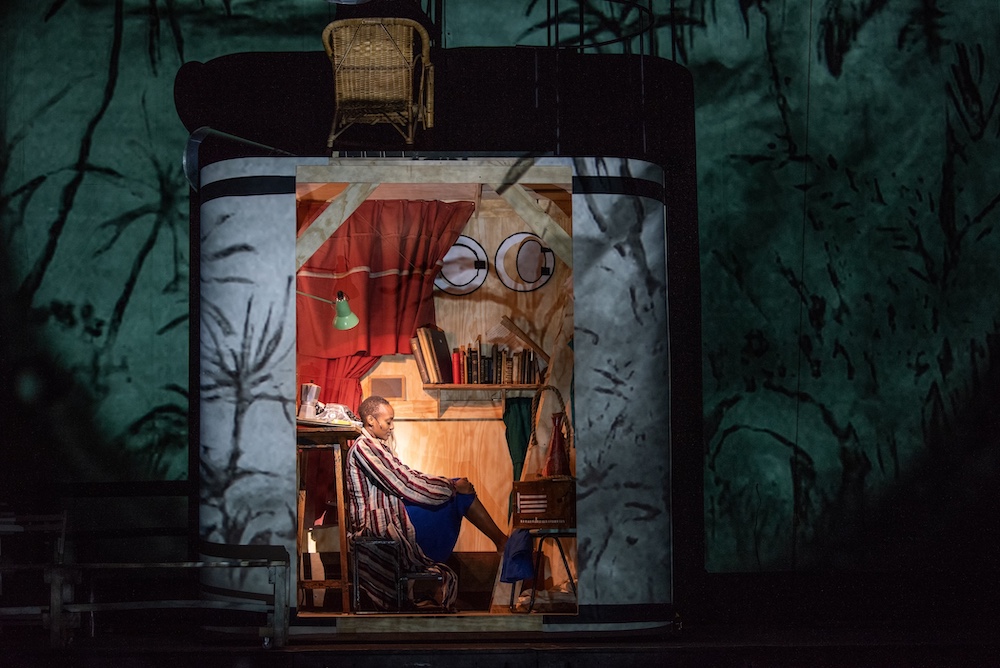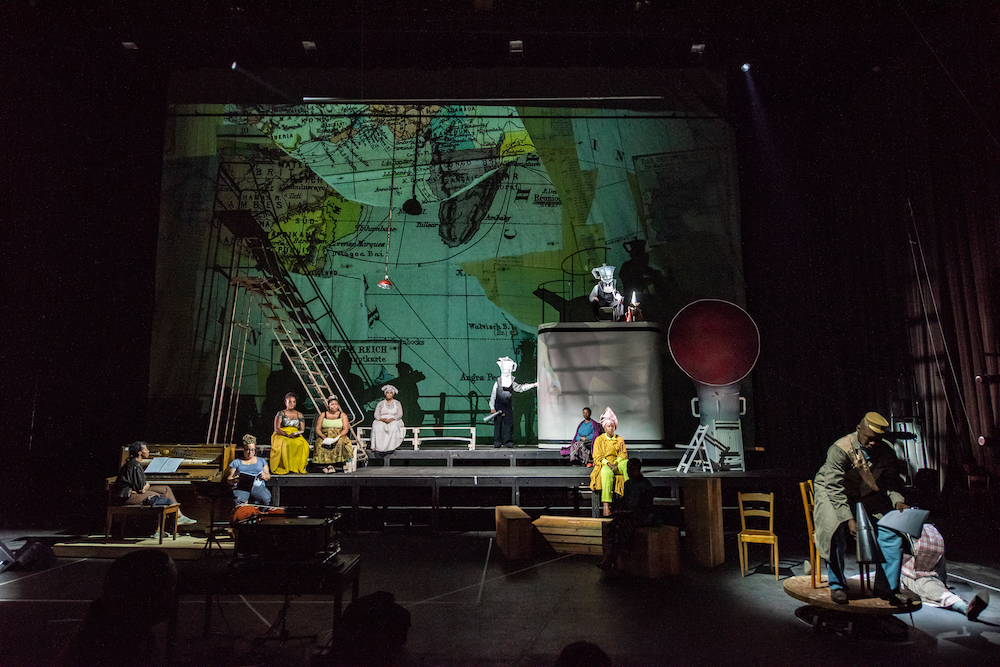Your cart is currently empty!
Tag: The Wallis
-

JOHN WATERS’ BIRTHDAY CELEBRATION: THE NAKED TRUTH
The WallisCan John Waters offend anyone these days? It hardly seems so. “I’m tired of being respectable,” he quipped at his show, “John Waters’ Birthday Celebration: The Naked Truth,” admitting he might be relatively mainstream today. He listed all his recent awards, and now he is greedy for more! “I want the Nobel Piece of Ass Award!”
Whether he can still offend or not, Waters doesn’t disappoint. This might be the fifth time I’ve seen Waters on stage, and once again, hilarious and flawless. His sold-out show at The Wallis theater last Saturday night promised to reveal all, and he didn’t hold back.
My first Waters live show was in the late ‘80s in LA and involved a beehive-hairdo contest. I took special care to sculpt my hair big and dress outrageously, but sadly, I wasn’t picked to be in the contest. That was just unacceptable, so I shoved my way into the contestant line—a classic Divine maneuver. I later realized I was probably competing with a bunch of drag queens, which was not exactly fair!
So on Saturday, I arrived especially early to people-watch, expecting to see at least a few Divine impersonators and some crazy wild outfits, but there were none. This crowd could have easily been attending a folksinger concert, albeit a gay folksinger. As I sat sipping my martini, the empty seat beside me suddenly became occupied by a young guy in his twenties. He was friendly and we started talking. I jokingly asked him if he felt like he just walked into a nursing home event. He did laugh but defensively pointed out the few young people sprinkled around us. When I asked if he’d ever seen Waters live before, he replied, “No,” referring to Waters as a “comedian,” which jarred me!
That got me thinking about how Waters remains relevant with his varied mix of fans. I’m old-school, as my introduction to Waters was his classic early films, but many fans today haven’t even seen Female Trouble, and their introduction to Waters is more like Hairspray. (I used to roll my eyes when I would hear someone say they love Hairspray, not even knowing about his earlier films, which really put Waters on the cult-status map.)
Waters is a polymath with his fingers in all the pots. He never stops producing, whether it’s a new book, his first novel (only a few years ago), a film, or a live tour. He is constantly on the go and remains a fixture in art and culture. Artforum and The New York Times routinely check in with what his favorite movies or books might be. Everyone wants to know, what does John Waters think of this or that? The Baltimore news media even reached out to see what he thought about the bridge that collapsed, which he told us onstage, seemingly rather amazed himself.
What keeps Waters still so fresh and alive? My first response would be, he’s still fucking hilarious (and stopped smoking years ago). He’s unabashed and authentic. He came on stage with his salvo of rapid-fire jokes: one right after the other, pacing back and forth, no pauses or glitches. Since this was a birthday tour (not afraid to reveal his age as most celebrities), he addressed getting old, and he doesn’t have a problem with aging; in fact, he loves it and finds whacking off to walkers very satisfying. (I must introduce him to John Tottenham’s sexy women-and-walkers paintings series.) He does not refer to himself as a male cougar (Thank God!). What he does have a real big problem with is shitting, and he’s not talking about constipation. I’ve read of a good bowel movement being compared to sex à la Charles Bukowski, but Waters couldn’t disagree more. The very act of unloading he finds a disgusting task—why did God design us this way? The one thing he looks forward to when he’s dead is never having to take a dump again.
Thankfully, we were spared the subject of today’s politics, with one exception pointing out that while all the protests are fine and dandy, what we really need is another Bloody Sunday if we want to make a difference (and he is so right).
He seemed to be even raunchier than ever, delivering his zingers with verve and conviction, snarling and twisting his face when he spat out, “I don’t like strangers touching me in a nonsexual way.” His suggestions for political correctness while talking dirty in bed were a riot and most crude. He makes fun of heterosexuals the way Black comedians ridicule white people. Today’s porn is no fun anymore now that it’s free, and he urges people to fulfill their every fetishism: “Go ahead and fuck that tree, trees are whores!”
Waters was on that night and delivered jokes, dare I say, like a true standup comedian. Known for his dedication to his fan base, he even stuck around to answer questions from the audience afterwards. It appeared once or twice he might have lost his place, taking himself back to the note card on the stool placed onstage with a bottle of water (of which he never took one sip), but that was even seamless as he muttered out loud to himself, “Let’s see, what else do I hate…”
-

WILLIAM KENTRIDGE
at The WallisIn his monumental displays of structure, history, movement and sound—operatic compositions that unabashedly aspire to the now-“traditional” status of Gesamtkunstwerk, William Kentridge has become a leading voice not only in contemporary art but in the world’s cultural and social discourse. At this point, after decades of engagement with the immoralities of apartheid in his native South Africa, Kentridge doesn’t so much speak on behalf of his Black countrymen—a necessarily awkward advocacy—as speak about and, in works like “The Great Yes, The Great No,” around the legacy left to a country like South Africa by a fraught modern history.
The quasi-opera concerns itself with a moment where Europe’s artists and intellectuals, having exoticized their subjugated African counterparts, had reason (need, really) to move closer to the civilization that so infatuated them. In this instance, that civilization was found not in Africa, but from Africa, in the Caribbean. In 1941, André Breton fled France’s Vichy regime by sailing to Martinique, where his Surrealist movement was already providing a theoretical basis for anti-colonialist sentiment. Also on board were Aimé Césaire and his wife Suzanne, African citizens of France who were crucially involved in the Surrealist/Black nationalist movement négritude (which would later play a role in the liberations of France’s sub-Saharan colonies).
Such an admixture of politics, aesthetics, history and drama appeals deeply to Kentridge, who allows himself some factual liberty to drive home his modernist fantasy (such as placing Cuban Surrealist painter Wifredo Lam and post-colonialist theorist Frantz Fanon aboard ship). The whole incident becomes bigger than itself in Kentridge’s hands, a pretense that might irk some scholars but which in fact marks the multimedia production not as an historical pageant but as an (art-)historical vision.

William Kentridge, “The Great Yes, The Great No,” 2025, at The Wallis. Courtesy of The Wallis. The chorus-like staging, replete with masks, moves and stage meanders, does maintain a pageant quality. The music is choral, accompanied by a four-instrument band. From their appearance, accents, and choreographies (individual and group), the actor-singers are apparently South African. For Kentridge these are not performers engaged in exotic ritual, but his neighbors and sometimes fellow strugglers. Aimé Césaire, Wifredo Lam—genuine Surrealists outside Europe—are figures from recent history who clearly inspire the artist’s awe. As he unapologetically demonstrated in his retrospective at the Broad last year, Kentridge is a Modernist fanboy par excellence.
The set for “The Great Yes, The Great No,” mostly chairs and benches downstage, is backed by an expansive diagrammatic rendition of a ship’s deck, actually taken from that of a South African ferry (if I understood correctly), above which pinwheel myriad different images and, often, slogans appearing in response to dialog on stage. The chorus-like ensemble moves fluidly before this droll firmament; their fractured processionals, along with the maze-like backdrop, recall the manically bisected performance spaces of another neo-Modernist impresario, the late Richard Foreman. Foreman was himself more of a Surrealist than Kentridge, but their passions are shared, as they also embrace Bauhaus theater and dance, stage-work of the Russian Avant Garde, Dada provocation, and of course the manifold pretenses of opera, grand and especially chamber. William Kentridge has many boxes and thinks outside all of them.


